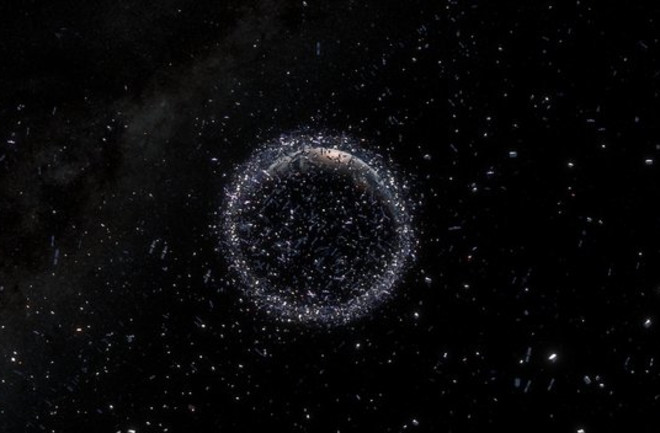Earth is surrounded by space junk, from fragments of old satellites to exploded spacecraft. The clutter isn’t just an annoyance; it’s a potential hazard for current and future spaceflight. Even small pieces of space junk can damage satellites and spacecraft as they whiz around Earth at up to about 17,500 mph.
According to NASA, there are hundreds of thousands of pieces of space debris larger than a marble. And there are millions more pieces of debris too small to track. Some space junk is just paint flecks from spacecraft. But even these tiny particles have damaged the windows of the International Space Station.
NASA and the Department of Defense help monitor this debris. Larger objects can be spotted and tracked individually. But the smaller the object, the more difficult it is to see and track. A new study describes a method that improves how accurately a telescope can point at debris, allowing researchers to pinpoint the locations of smaller debris more precisely.
Read More: Despite Concerns, Space Junk Continues to Clutter Earth Orbit
One way scientists pinpoint orbital debris utilizes a technique called laser ranging. Scientists beam lasers into space, and a telescope picks up the light that’s reflected back from orbiting debris. Researchers use this reflected signal to deduce how far away a piece of debris is, like a bat using echolocation to track prey.
However, it’s hard to make these measurements precisely because the debris doesn’t reflect much light back.
Now, a team in China has improved these measurement capabilities by using machine learning techniques that made the telescope point more accurately. The new technique lets the telescope better lock onto faint debris, so researchers will be able to detect smaller, fainter objects.
The researchers presented their work in a recent paper in the Journal of Laser Applications. In a press release, they say that the technique would let them find a piece of debris as small as about 11 square feet in size that’s about 900 miles away. With more improvements like these, space agencies may be able to operate orbiting spacecraft more safely.

